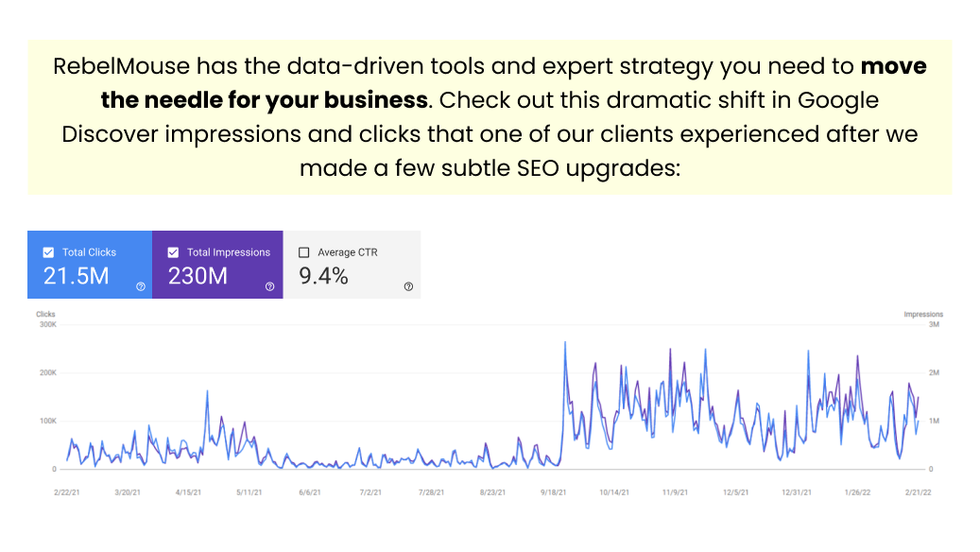Google Discover is an excellent way to find new, hyper-targeted audiences that are interested in your content. Our subtle SEO tweaks help clients generate new traffic from Google Discover all the time.
Massive Click Increases After Google Discover Optimization
By Anne BurnsMar 25, 2022
Anne Burns
Director of Marketing
Branding specialist with over ten years of experience in integrated marketing strategies, digital and social content, search engine optimization, and online advertising. I have led efforts to bring newsrooms, small businesses, and legacy brands into a digital presence that’s true to brand, profitable, and personalized.

